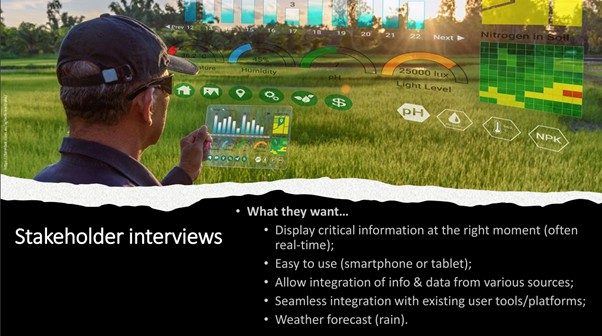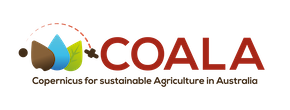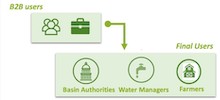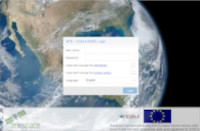- About us
- Project
- Publications
-
Deliverables

D6.4 – Promotional material
December 31, 2020DeliverablesThe aim of the communication materials is to publicise the COALA Project among potential users. This Deliverab...

D6.2: Communication and Disseminati...
December 31, 2020DeliverablesThis Deliverable is an update of the first version of the Communication and Dissemination Plan.

D4.1: Baseline Description of Pilot...
September 30, 2020DeliverablesThis Deliverable describes the pilot experiments of COALA Project. Participatory evaluation of the COALA servi...
- Media Room
-
News

COALA Project: A Success St...
August 20, 2023Blog, Evidenziato, News, Press ReleaseThe COALA Project, a European Union funded project involving a collaborative initiative between the European U...

Workshop on COALA business model
December 19, 2020News
Plenary meeting November 23, 24 and...
December 1, 2020NewsThe plenary meeting of COALA Project has been held on 23rd, 24th and 30 November 2020

Webinar: Governance of Water Scarci...
November 17, 2020NewsThanks to Copernicus data, Europe and Australia launch a new challenge to improve the management of water and ...
- Blog
- Resources
-
- July 13, 2021
- UNSW
- Blog
- No Comments
The COALA H2020 project: A WOMEESA seminar

The COALA H2020 project: A WOMEESA seminar
COALA H2020 has shown us many challenges of implementation under COVID and multi-sectoral, international collaborations.
WOMEESA is a network of women working in Earth and Environmental Sciences in academia, industry and government. WOMEESA works to promote Earth and Environmental Science research and activities through social networks and the media. COALA H2020 uses Earth Observation technologies to support farmers. Earth Observation is a technique that helps monitor the status of, and changes in, the natural and artificial environment. Therefore, Earth Observation is a core concept to advance knowledge in the Earth and Environmental Sciences.
Earth Observation is also the essential pillar that underpins COALA H2020. Our project, which the European Commission funds under the Horizon2020 programme. COALA H2020 promotes the European Union satellite Earth Observation programme — Copernicus— and its applications for supporting low environmental impacts of agriculture in Australia. During the 3 years scheduled for completing this project, 11 partners, including academic institutions and Small Medium Enterprises of Australia and Europe, are developing mechanisms for sharing European knowledge and expertise in the field of EO-based applications for agriculture with Australian institutions. The final aim is to support more sustainable use of water and nutrients in the advanced agricultural systems of Australia.
WOMEESA Seminar
As team leader of UNSW —one of the project partners— Professor of Environmental Geography Graciela Metternicht recently gave a talk about COALA at the WOMEESA. In this talk, she introduced the framework, initial results and challenges that such inter-national, multi-sectoral and multi-stakeholder collaboration poses.
Graciela reflected on the aims of the Copernicus programme. Copernicus brings a new perspective for Earth Observation (EO)-based services that can shape more profitable and sustainable agriculture. The Sentinel-2 satellites bring freely available high spatial and temporal resolution multispectral data. These data have opened new opportunities for enhanced sustainability of the agricultural sector through the market development of EO-based services.
Graciela pointed to two main challenges: end-users’ uptake of this technology and efficient processing of EO data.
“We are implementing the COALA project, with a vision of having in place. By the end of the three-year project, we want to have a strategy for reducing barriers associated with adopting EO-based technology to optimise irrigation and nutrient management, including concerted approaches for scaling up from the farm to district/basin scale”.
What are we doing?
When we started, our big aim was that we use the Sentinels from the Copernicus mission. We want to share the experience and expertise of European researchers and enterprises on EO-based applications for agriculture with Australian institutions. The idea is that we can use research that was previously developed and adapt it. We are transferring it to the Australian environment to help some of the areas of Australia that are working around sustainable agriculture and sustainable water use.
Who is involved?
Another of the aims of this program is to foster the creation of startups and new businesses. This project is a consortium of 11 partners —some are SMEs based in Europe. We are promoting the uptake of technology based on EO within Spanish and Italian environmental management areas.
Then we had our academic partners, the University of Melbourne, UNSW and a university in Spain —the University of Castilla La Mancha—, and Boku University in Austria. We also have end-users from Europe working with farmers who are adopting the products that we are transferring to Australia.
They are the ones that know what an end-user needs or why an end-user chooses to update this technology.
Then we have business partners from Australia working in the area of efficiency in irrigation and nutrient management. The Birchip Cropping Group — an agricultural consultancy group working mostly on rain-fed agricultural areas within the Murray Darling Basin, is a key partner helping in the uptake of EO-based products and services.
With these 11 partners, we are bringing in a prior experience of the European enterprises. This is something that the European Union look for – how to build up something from previous projects. This way, the knowledge they have invested in keeps building up.
Obstacles
A critical obstacle to up-taking innovative fertilisation advisory services is the abundance of software platforms available to the final user. Users are overwhelmed with new dedicated platforms. They prefer accessing information and services from platforms that are familiar to them (e.g. an app or Web-GIS). The project also adopts the concept of Data as a Service (DaaS). Products developed can be immediately used by users (within their existing platforms) using various communication technologies and processing standards.

White Research is our partner with expertise in processes of co-creation. Co-creation with our target users is a dynamic framework and an adaptive roadmap; we develop activities focused on a small group or one-to-one meetings with the project partner users to identify their key requirements (what are their expectations? What are they looking for?) and ensure that what the COALA aims to deliver aligns with next user expectations.


















